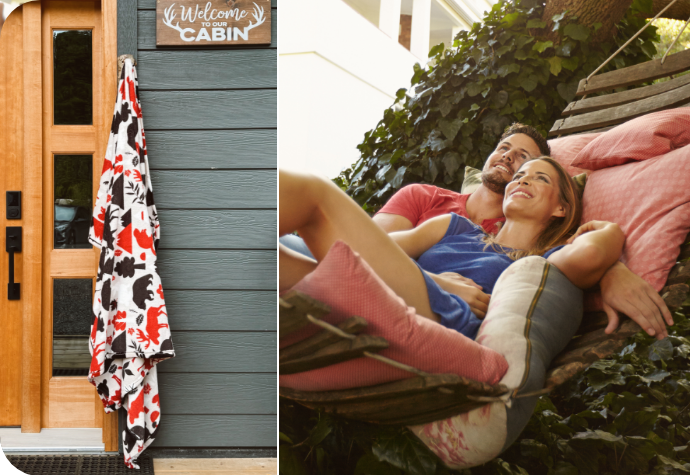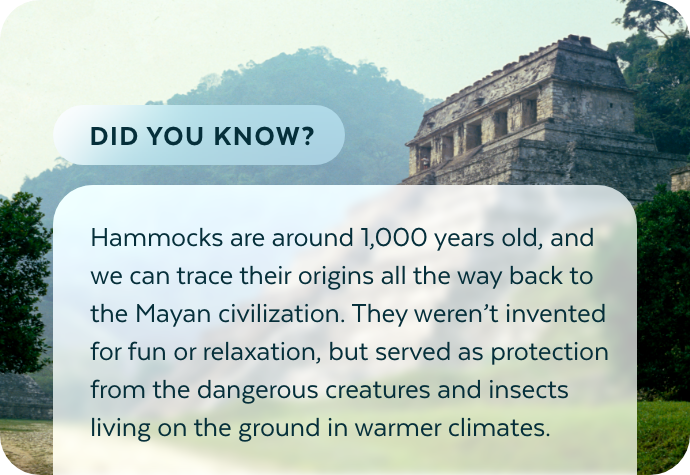International Hammock Day: The Science and Joy of Outdoor Naps
2025 Jul 18th
Are you a napper? Strictly a nighttime sleeper? No matter how you get your zzz’s, it may be worth your while to try taking a nap in the great outdoors this summer. Especially this week: tomorrow’s International Hammock Day!
Whether it’s in a swinging sleep sanctuary, a bed, or by the poolside, taking a nap has important health benefits. Read on to learn why napping in a hammock is extra special.
Why Sleep In a Hammock?
A common practice in Scandinavia, taking a nap outside is a simple, restorative way to get closer to nature and truly relax. Here are some of the benefits of snoozing in a hammock:

1. Better Sleep
Besides being so easily portable that you can doze off anywhere, hammocks actually provide an amazing rest, too. The gentle rocking motion of a hammock mimics the soothing rhythm that helps babies fall asleep—and it works for adults too.
Hammocks also cradle your body evenly, which can relieve pressure from joints and reduce tossing and turning. This can be especially comforting for sleepers with back or muscle tension.
If you want to add some softness and comfort, try some supportive cushions and cozy throw blankets or a quilt set! Too hot for blankets? Go light with a breathable flat sheet.

2. Deeper Relaxation
Falling asleep indoors these days can be a stuffy, humid affair. So why not give it a try out in the wild? Fresh air and gentle outdoor sounds promote deeper relaxation, and being out in nature increases serotonin, the feel-good brain chemical.
What’s more, being suspended in midair - say, in a hammock - naturally calms your nervous system. Combined with the calm of a midday rest, it’s an easy way to feel happier and more grounded.
Prefer taking the outdoor vibes indoors? Try dozing off next to a fan and plugging in to the Atmosphere: Relaxing Sounds app.

3. Improved Cognitive Function
Studies have shown that taking a siesta right after lunch can help you remember things you forgot earlier in the day - similar to a full night’s sleep. It can also help keep your senses and motor skills sharp throughout the day.
Midday is the ideal time of day to take a nap, as it’s when your circadian rhythm is programmed to catch up on missed sleep from the night before. Now imagine taking that siesta outdoors, surrounded by nature—it's the ultimate recipe for a brain boost.
The Flip Side
Napping isn’t everyone’s cup of tea. Many people say they avoid napping because it makes them feel groggy or makes it harder to fall asleep later.
To avoid these issues, limit your naps to 30 minutes max, after which it may become zombie-inducing. Set an alarm or drink a cup of coffee right before your snooze - the caffeine will kick in 20 minutes later and naturally wake you up.

How to Hammock Nap Like a Champ
- Travel cozy: No matter where you’re bringing your hammock, pack it in a clear crossbody bag for easy transport and don’t forget a comfy Travel Mate Set for naps in the car
- Find some shade: Tie your hammock between two trees in a park or by the beach!
- Sleep comfy and cozy it up with supportive cushions and soft throw blankets or a quilt set
- Block out any excess noise and light around you with a white noise playlist and an eye mask
- Set an alarm to make sure you don’t oversleep (10-30 minutes is ideal)
- Check out our curated naptime page for all your napping essentials
We hope this blog has inspired you to get outside and enjoy some quality zzz’s this summer! If you ever need help getting the rest you require, read the advice on our Pillow Talk Blog or visit one of our 70+ stores locations to talk to a sleep expert in person. Happy napping!


